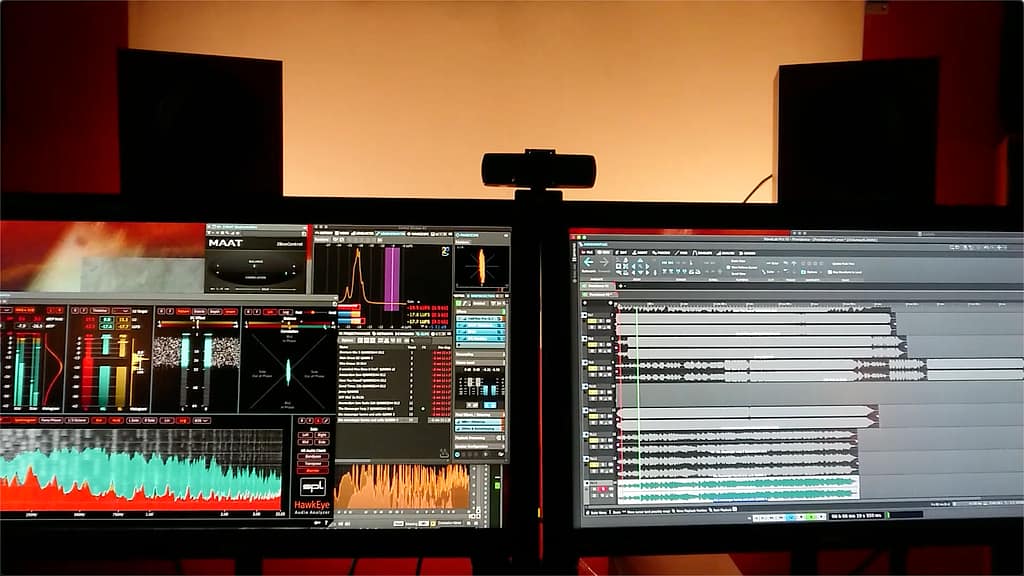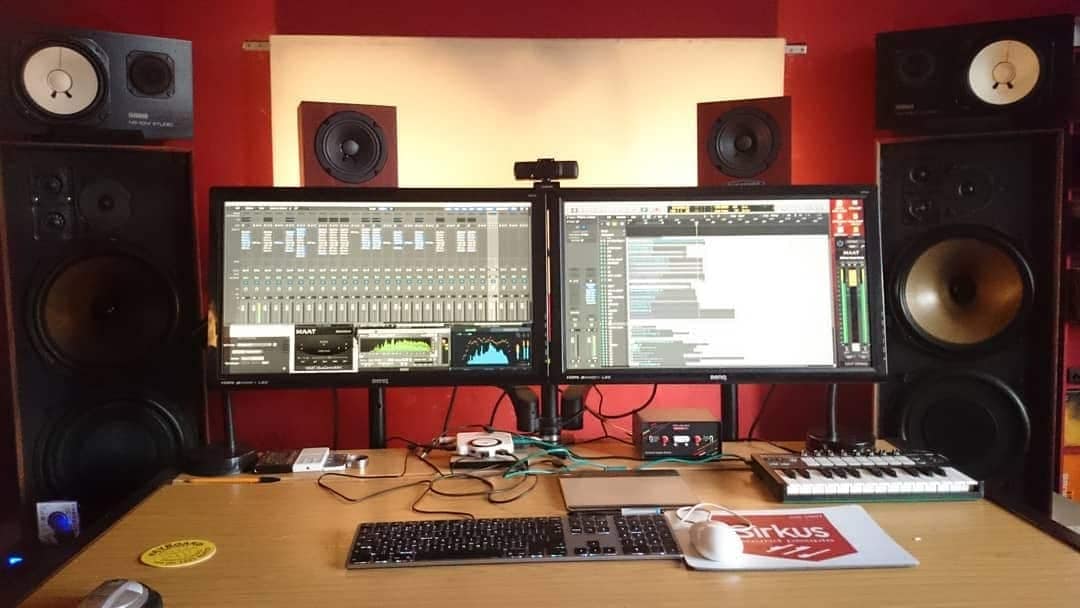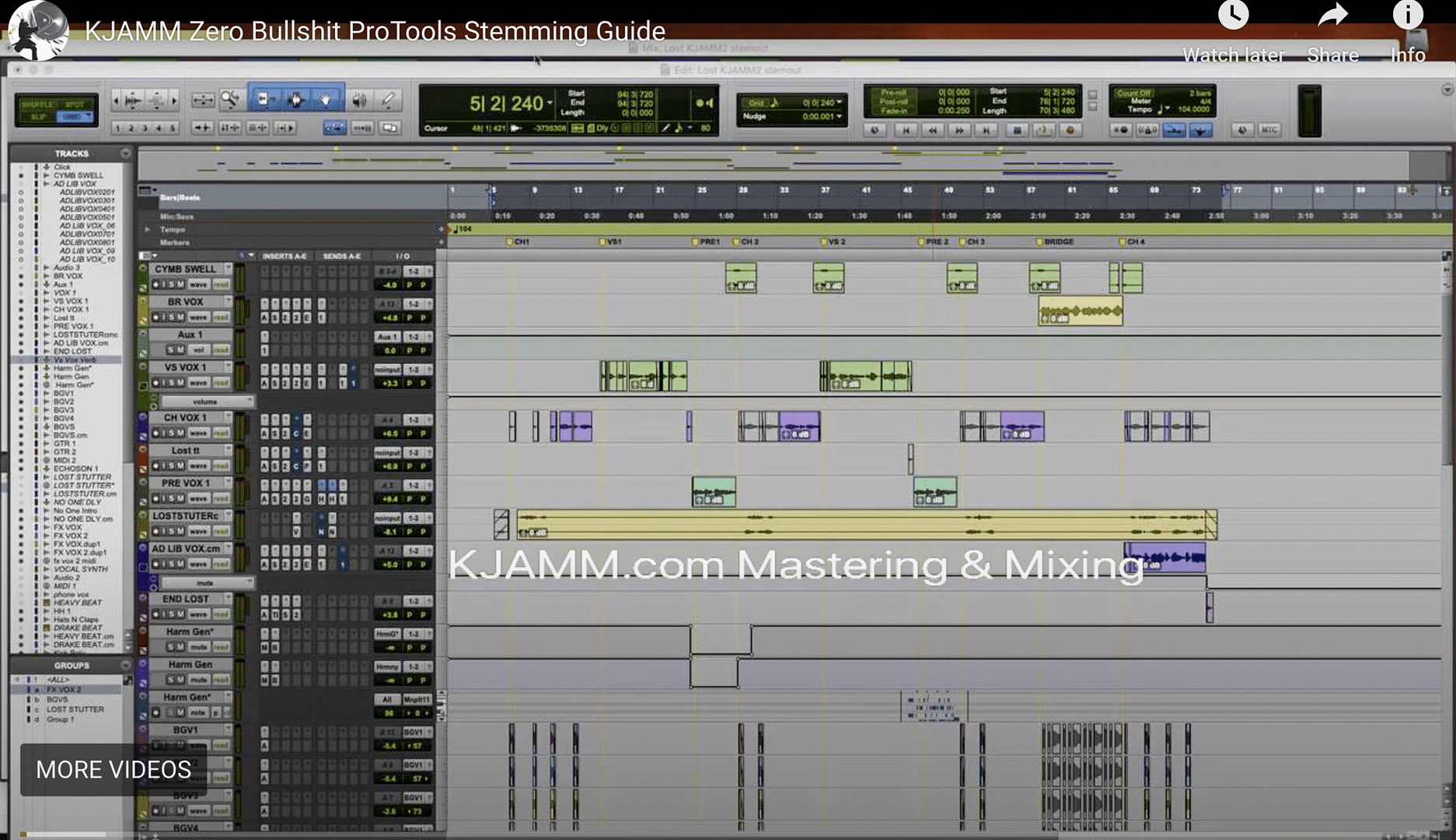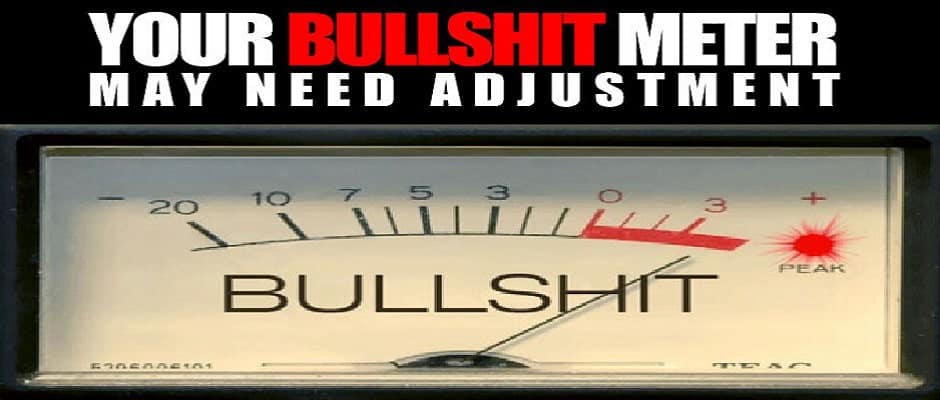Disclaimer – Any endorsement deals will be made clear. Kit critique here is honest opinion based purely on pro experience. Excellent equipment is essential, but in the vast choice of amazing and/or overrated kit out there, specific gear choice and technique is confidential. It’s discussed in detail only with my mixing, mastering and tuition clients.
That said, you’ll find some really useful pro mixing & mastering tips and technique here. Some at expert level, some much more basic. Pro tips you probably won’t read anywhere else, no holds barred in-depth advice from years of research at the sharp edge of professional mixing & mastering work for internationally recognised names like David Bowie, Chaka Khan and New Order, and countless other bands and artists. Every one of them treated with the same artistic and technical respect. The musical margins between megastars, those just starting out, and those earning an honest living can be extremely fine. So the first priceless tip is take everyone’s artistic journey seriously – because you absolutely should, not because they may turn out to be the next big thing.
If your’e interested in a fuller outline of kit, visit our studio website, Sirkus – we have around 1500 of the best plugins out there and fantastic full range custom passive monitoring. Details there.

Equalisers Are Definitely Not Equal
DMG Equilibrium is still a very good precision EQ. It was much favoured by mix & mastering engineers. But to be honest, the CPU drain in its best modes is a real drag when you have several trial master chains per song live across a full LP. I’ve replaced it over the last few years with a mixture of even beetter EQs. Fabfilter Pro-Q3 for the crucial first step linear phase stereo and side low cuts; modern analogue emulations like the stunning Amek 200 , Amek250 & stunning Summit EQF100 for tube shimmer; other superb EQs from Plugin Alliance, PSP, UAD etc…plus some great, niche EQs from smaller companies doing amazing plugins for much less or free. Kazrog get a special mention here, but there are others even less well known that I’m not going to divulge. I know they contribute to my signature sound.
I’m assuning that the same offerings such as the Kazrog/ UAD’s Avalon EQ are ‘whitelabel’ GUIs based on the same underlying code and then badged ? Let me know if you have evidence this is not the case. But I’ll say for sure that Audiothing Outer Space Space Echo emulator is in every way functionally superior to the UAD Galaxy Tape Echo, version and two thirds of the list price. Buy smart- with your ears.
So, for me there are better, more flexible, more authentic options than EQuilibrium now, and with far superior CPU usage. It also means you don’t need a PhD in digital signal processing theory to get your head around the impulse response settings. I understand all that stuff – but the sound of these new full emulations is better than the DMG algorithms. The quirky non linearity is modelled better, and if I have to flip into ‘science’ mode, I’m in the wrong mode for mastering or mixing.
Every track is different so some of those EQs above are very common in my mastering/mixing chains, sometimes I end up with an EQ I’ve rarely used on a master or a vocal – in the search for something that’s in the harmonics that needs exactly the right tool to tease it out. I’ll swap EQs out a lot once I’ve had a play with the obvious EQ technique. It solves the problem – it’s how the actual EQ treats the different odd & even harmonics that is the answer, not the precise EQ curve. If it were all about transparent, precise EQ, I’d be using max linear-phase Pro Q3 on everything. Actually, linear phase EQ is pretty rare in one of my mixes – usually only deployed when there’s a lot of analogue signature in a sample or recording and it needs EQing without further messing with the complex harmonics already there.
You can also mostly ignore the received wisdom to use cuts rather than boosts in EQ. It shifts the phase the other way yes and so makes it ‘less audible’, true – and that’s exactly the opposite phase shift that’s required to push something forward in a mix. I’m sure now that this is why most text books say cut and most engineers boost. It sits things forward in the mix if it’s an anlaogue or modelled analogue EQ – literally. It’s in the nature of the capacitor and inductor coupling in the circuit of a filter, which is the basis of EQ circuits.
See Hear
#2 Most Important Tip Ever
Close your eyes and a/b it. It’s the only way audio decisions should be made. Not by phase nulling, or what the EQ curve or gain reduction may or may not look like. It’s ultimately only the sound that counts. Our ears are far more sensitive than the most advanced analytical techniques we have. But what you see is an issue.
In fact, the visual cortex is so important to auditory perception that opening your eyes and looking at lovely EQ curves will override your ears.
Vetter et Al (2014)
It’s a newbie pro mixing & mastering error and it’s barely mentioned on YouTube. It’s one of my reservations about anything with an EQ curve display, It’s way too easy to get into making the curve look right, rather than making the track sound right. The discipline is to close your eyes when you a/b – it’s the same discipline needed for meditation. Your attention to the moment slips, don’t beat yourself up, relax you body, return to the task at hand… which sounds better with a and b at the same RMS loudness? The amount of times it sounds better while adjusting it on the GUI and worse with eyes closed is astonishing if you’re not used to this.
#1 Most Important Tip Ever
REFERENCE…AT THE SAME RMS That’s right, ‘great’ sounds like whatever you’ve decided to reference. ‘Great’ is totally subjective. Some of the mixes and masters of amazingly popular older tracks sound awful in many technical regards, but they may still be desirable to reference. Pick the very best finished material you can find and reference to it – a/b solo hot swap. The instantaneous impression of the difference is your strongest objective tool. It works 100% on ANY speakers or cans, in ANY room acoustic… even when your ears are tired. But beware there are two types of referencing –
Type 1 Referencing
Artistic/musical/arrangement/performance referencing- Longer listening needed… up to and including full track for impact on it’s own then compared to the other section/track.
Type 2 Referencing
Technical/sonic/harmonic referencing – Instantaneous, rapid swapping necessary between two or more alternatives with no discontinuity in the audio engine to establish contrasting compression/ limiting / sub/ bass/ mid/ tops/ stereo image/ dynamic punch/harmonic distortion type & amount/ mid-side nuances in EQ etc
This essential comparative ‘hot-swapping’ for type 2 referencing is why I have to get my master chains sounding spot on in a DAW like Logic Pro X, ProTools or Reaper and then complete the mastering in Wavelab Pro, which simply will not hot solo swap between trial master chain tracks without major glitching of the audio engine as soon as any serious mastering plugins are in the chain, like eg a Fabfilter MB on full linear phase. Try it. I’ve contacted them several times to say this and that 12 plugins is not enough for a mastering chain. Uwe simply says I’m using 3rd party plugins which they don’t support and appears uninterested in the 12 plugin limit. That’s the ‘worlds best mastering software’! Great batch rendering Steinberg, shame about your arbitrarily small plugin chain length, audio engine glitching and refusal to implement trackpad pinch zoom and niceties like that to save professional wrist RSI. I adopted a touch pad with graphic peen with all the mac finger gestures years ago when I got real bad wrist pains from countless hours of precision mousing. It’s the answer. Big touch screens are as bad as leaning over huge format consoles all day.
Wavelab Not So Pro
I’ve actually solved the short plugin chain length in Wavelab Pro – and found a super efficient mixing and mastering workflow that enables me to instantly drop pre-saved chains of any length of parallel or serial plugins in any format, into any DAW, on any track. It’s not difficult, but I’m not going to point out the obvious for reasons at the bottom of this page. However, I guess I should actually say thanks to Steinberg for forcing me to look for a solution which took me somewhere even more useful. Personally, I still lament the loss of Aurchitect Triumph, it was sooo advanced in its abilities like audio engine smoothness and import of any format in any sample rate to the timeline without conversion on the way in. Sad loss Evan Olcott, but Steinberg… snap the guy up please.
Mastering Essssential De-Essing
Back to plugins. Fabfilter’s Pro-DS also looks great but I’ve never succeeded in getting it to do what I need for mastering, or mixing for that matter. Maybe I’m missing something key to it. Though I’m left wondering how Logic Pro X can get its default De-esser 2 to be so easy and effective to use, while so many struggle with over-complication. Waves’ R De-esser and the glorious Lindel 902 are as good as any Weiss or shiny expensive toy. And sometimes you have to go for mid (or even side) sibilance only, so Fabfilter MB tames it quick. Rather than faff with pushing something not designed for M/S into an M/S matrix. They all beat having to use a fast compressor with loads of sibilant frequency gain on the side-chain like we had to for many years, that’s for sure. But Fabfilter MB is a better de-esser than their DS de-esser imho.
Trust Them, They’re An ‘Expert’
Beware the hocus-pocus & pseudo-science from ‘pro’ mixing & mastering people and ‘standard’ text book authors with expert marketing or clickbait or science pedigree but no actual track record of making things sound great. Having said that, DO study the maths and physics if you can. It helps massively to cut through the BS to establish the likely truth. It’s fantastically helpful to get a sound scientific education and go look at research papers and Gearspace.com if you’ve got stuff to learn or complex problems to resolve. It will help unlock technical doors to why your mix or master may not be sounding good yet.
But understanding the physics is neither necessary nor sufficient to mix or master like the very best. Some great mix and mastering engineers had no formal academic training at all. It’s all in the ears and how you train them – you train them by listeing for hours on end day after day – referencing and blind a/b ing. My ears were just confused by compression as a trainee. The acuity takes literally years to hone, but you can get amazing results all the way along your ear development as long as you don’t step outside what you can actually hear. Don’t do it cos you’ve been told to, do it because it sounds beter. Simple.
Our auto suggestive audio ‘ hallucinations’ are mind blowing. The cumulative amount of time I’ve spent EQing blank mixer channels must be countable in weeks. The scary thing is your ears hear a change when you turn those blank dials – just not enough. I’m much quicker now at spotting that ‘ Why is this Eq not biting properly?’ moment and checking which channel I’m actually tweaking. But I still do it regularly.
Our ears are totally susceptible to suggestion and compensate rapidly after just a fews secs of high frequency boost, so the bypassed original will now sound duller, like it’s been top cut. It’s fine – deal with it. ‘Golden ears’ are mostly a myth. There are only really amazingly trained ears.
I’m talking about sonics here not musicality: The ability to detect incredibly subtle frequency, dynamic, harmonic distortion subtleties. I’ve worked with people who can triple track ‘auto chorused’ unison backing vocals without hearing previous takes, and some who can tell you what any chord is and which notes are just-tuned or equal temperament, or flat, or whatever. That’s an awesome ‘perfect pitch’ gift. It will get better with some training but I think it’s either present at birth or not. I’m not sure whether this other type of ‘engineering hearing’ is also a genetically wired thing. But I strongly suspect that most people have sonically trainable hearing because simply everyone’s ears are fooled by a short burst of high frequency EQ.
Try it. Briefly insert and then bypass a +10dB 2.5kHz shelf on any mix with your eyes closed. Everyone I’ve ever tried this with hears the bypassed track as duller than it was before the EQ was activated briefly. Me too. Maybe we should run some genuine double blind listening trials? It speaks to just how foolable our ears are. And it pretty much busts the golden ears myth. We have to reference a known tonal balance to know where our ears are right now – they drift according to monitoring level and overall frequency balance.
I will add though that really acute hearing does lose its sharpest focus over a decent long break. It can really throw me when back in the studio after a long holiday. It’ll be super mentally fatiguing the fist few sessions back. The brain seems to be spending a lot of energy on hearing that fine detail. Mastering is far more tiring than mixing anyway, but those first sessions back can be surprising.
Get Over Yourself
The science.. and your ego.. have to get out of the way to really listen
If you really want to know how to make things sound good, you either need to learn from someone who can do that or figure it out as you go. I’ve worked as an adjunct lecturer for decades part-time and can number on one hand the lecturers I’ve worked with who could actually mix or master to good commercial specs reliably. The physics may be just the start. Psychology is just as important to get great vocal performances. Empathy is crucial to read the mood of the singers/ musicians and be able to truly feel the various juxtaposed narratives, melodies, harmonies, dissonance etc. Musicality is critical. You’re listening to one of the highest art forms humanity has to offer. But the ability you need is the ability to actually listen to all those above factors and act on all those senses at once – intuitively. Flowing smoothly between, dots, chords, beat nuance, just tuning, dynamics, balance, harmonic distortion, juxtaposed emotions, etc etc
Pro Mixing & Mastering Experts Rarely Show Exactly How It’s Done
Here’s a final tip – those who can really shape sound according to what the music is trying to say rarely give away all the details of how they actually do what they do. Whether it’s in interviews, books, blogs or contributions on the pro audio forums. I think there may be several common reasons:
- They’re too busy making great records.
- Engaging with those who are convinced they know best despite little experience is pointless.
- The more BS gets propagated, the less competition to actually make good records… let them get on with it.
- Imposter syndrome – It’s a big deal talking to peers. It bothered me to the extent of deep self-doubt at points all through my career, and bothers me sometimes to this day. In many cases I think the better people are, the more they feel somehow that they’re bluffing it sometimes.
To be honest, as someone who would rather pull my own teeth than read a book cover to cover, give me Youtube any day, I had to teach myself most of what I know from Sound on Sound, and then by hard practise at the sharp end of getting paid or not. When it comes to learning, just make sure you triangulate what people are saying till there are no apparent contradictions left. It’s a good starting point to ask yourself has this person ever mixed or mastered a track that’s done well? Most authors of recording text books fail it. Good physics, shame about the mix & mastering tips.
Triangulation is how we all figure out who’s really expert and who’s got some tricks but is really at the start of their own learning journey. Or worse, someone who’s just pushing their product without the circumspection necessary to establish if the demo they’re doing actually sounds better than bypass. I commonly hear gear demoed by the manufacturer where the bypass sound better on full range monitors or cans. The kit may or may not be great, but the way it’s being demoed has not been listened to with the audio detail necessary. Most common is slicing the punch of the bottom end in mixing and mastering demos involving compressors or limiters… or side-chaining them. The answer is always the same – Use your ears… and learn to trust them, they’re a lot smarter than you might give them credit for… but don’t get complacent 🙂
New Auratone 5C Mix Cubes Are Superb
The brand new Auratone 5c MixCubes are superb. Even better than the originals. So much better for fi…
ProTools Stemming Guide
Easy – but oversimplified if any of your tracks are clipping – and most mixes will have …
Pro Mix Tips 102
Mortgage The Masters !? I recently mastered a crowd funded LP for a new client who had been working …
Pro Mix Tips 101 – For Great Masters
Less is truly more. Fidelity drops through the floor as we process in series. So use as few pl…




